HD 80606
AXA Light Curves
Links internal to this web page
Comments
Basic data
Table summary of
transit measurements
Transit LCs
- Amateurs
Transit LCs - Professionals
OOT LC
Finder image
Miscellaneous
Information
References
Comments on LCs on this
web page
This is a difficult target.
Basic Data
RA = 09:22:37.6, DE
= +50:36:13
Season = February 07
V = 8.5, B-V =
HJDo = 4876.323 (35), Gillon
(2009) global MCMC fit (reference below)
P = 111.43637 (34) day, Gillon
(2009) global MCMC fit
Depth = 10.6 +- 0.8 mmag, Gillon
(2009) global MCMC fit
Length = 12.6 +- 1.7 hr,
Gillon (2009) global MCMC fit
Table Summary of
Transit Measurements
Transit Light
Curves - Amateurs
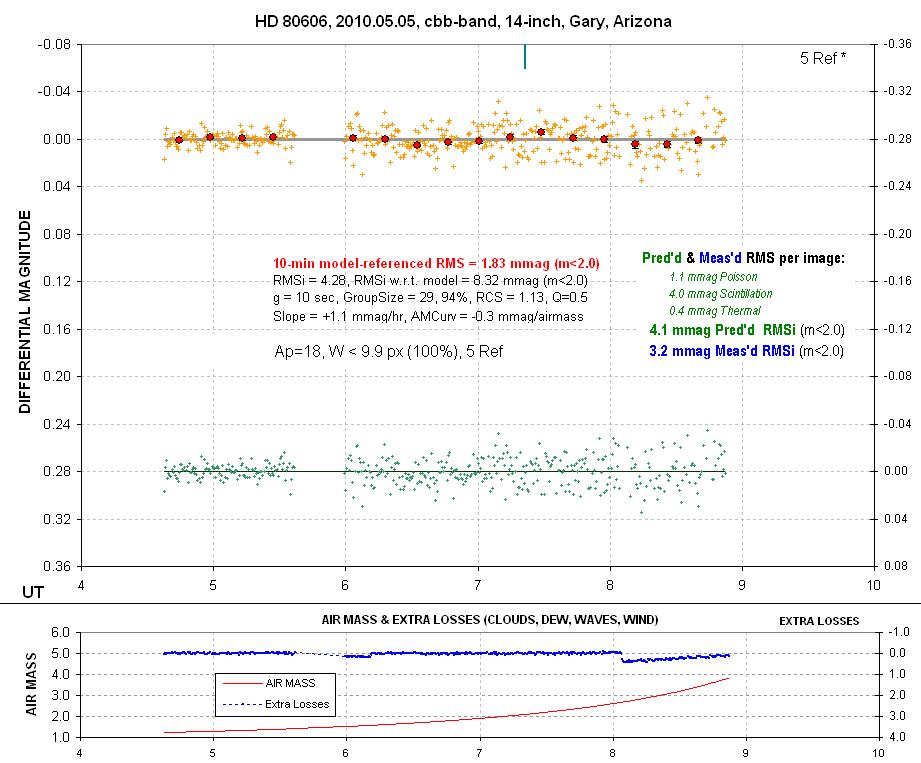
2010.05.05-hd80606-M14(cbb)-pro
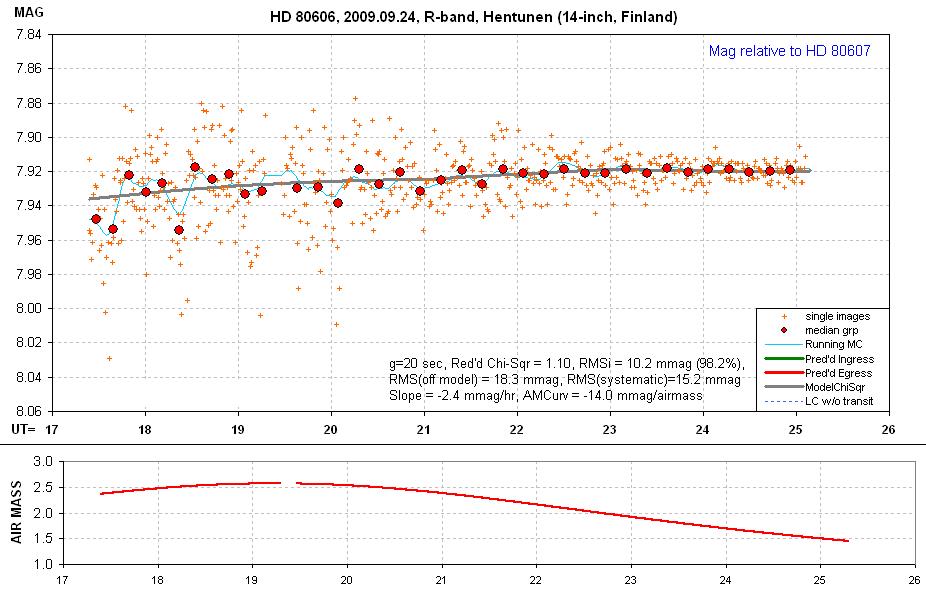
Same data is plotted in next graph.
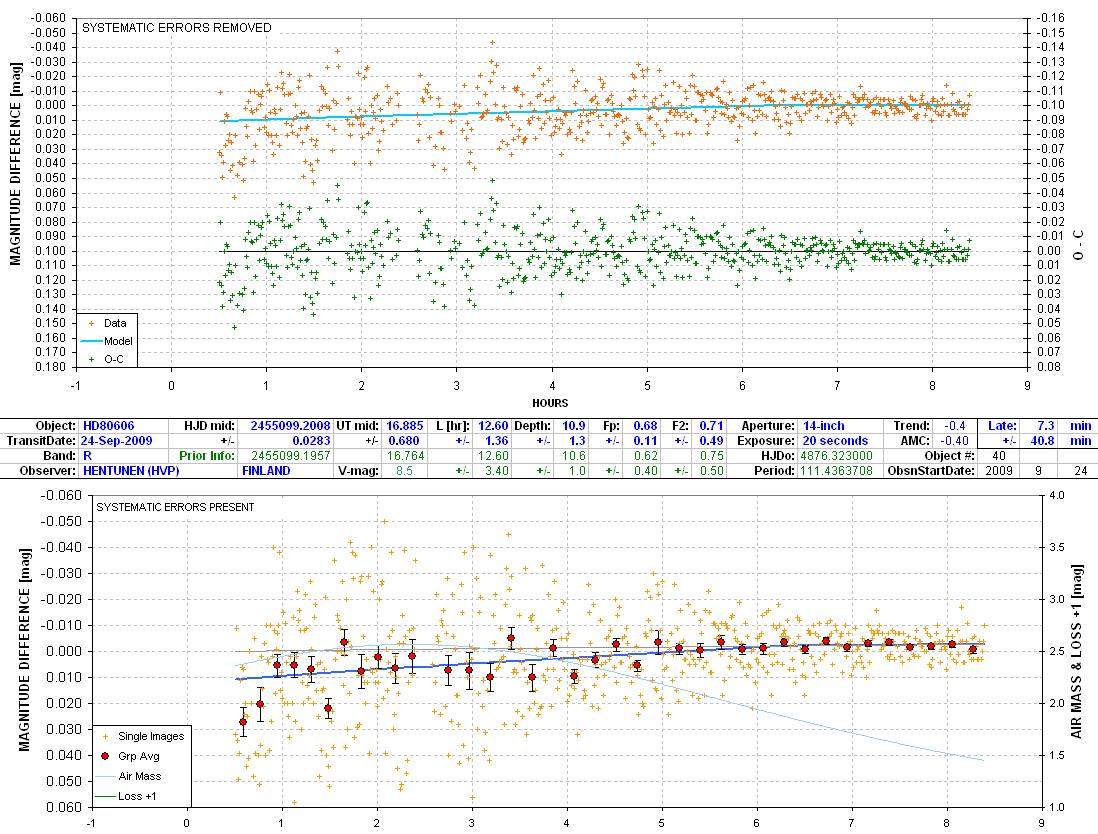
9924HVP See previous graph for calification
of UT coverage.
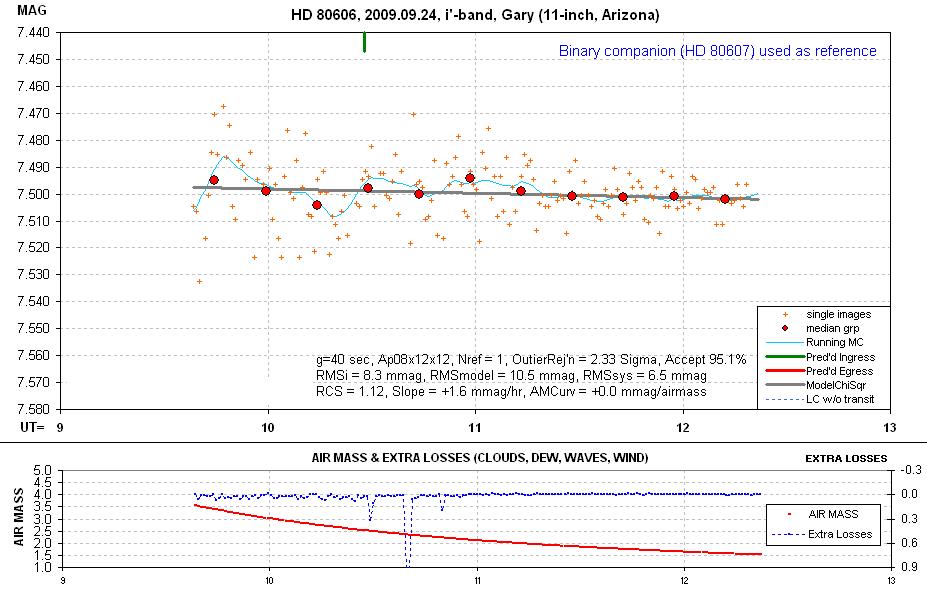
9924GBL A "no show" for predicted ingress.
Transit
Light Curves - Professionals
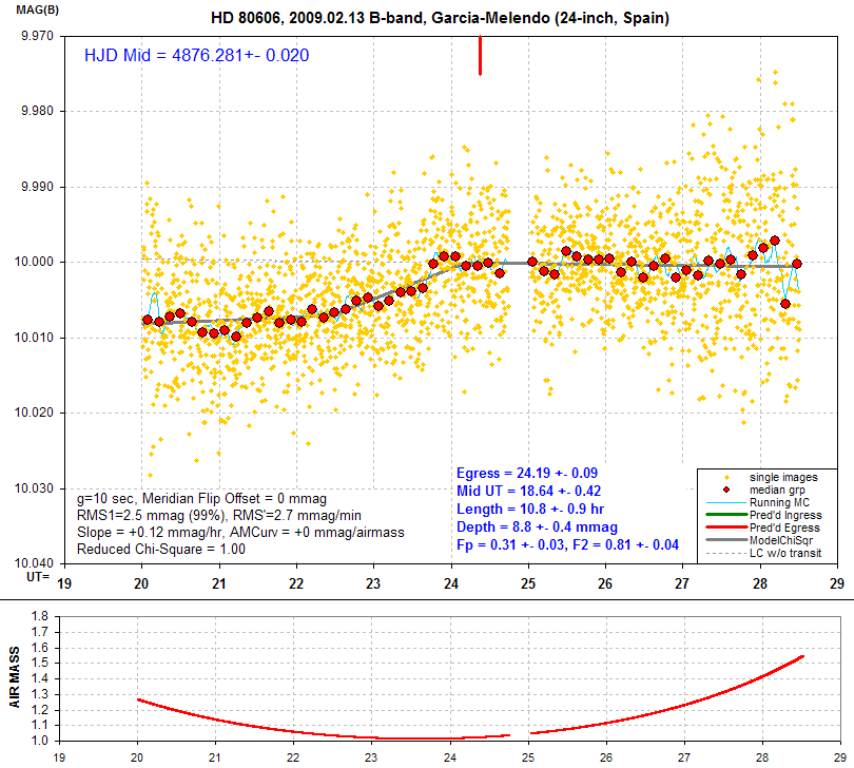
9213GM21 This is my fit to Garcia-Melendo's data when a
+3.5 mmag meridian flip zero-shift was applied to data after 24.9 UT.
Zero shifts matter and the reduced chi-square criterion allows for
a wide range of zero-shift values. Consequently, uncertainties for mid-transit
time, length and depth are greater than for any single zero-shift assumption
(using chi-square). My subjective interpretation is that mid-transit HJD
= 4876.30 +- 0.15, length = 11 +- 2 hrs, depth = 8.9 +- 0.5 mmag. The publication
by Garcia-Melendo & McCullough give 4876.33 +-?, 11.3 +- ? and 10 +-?
mmag.
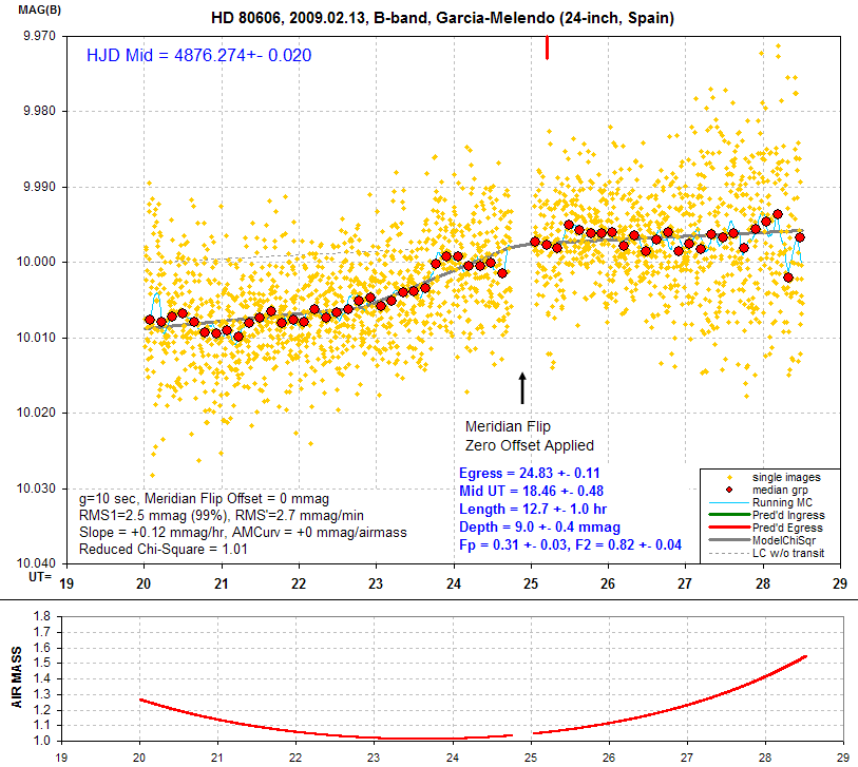
This is my fit to Garcia-Melendo's data. Thanks, Enrique, for sharing
your data with AXA. No zero shift was applied to meridian flip at 24.9
UT, as suggested by Garcia-Melendo.
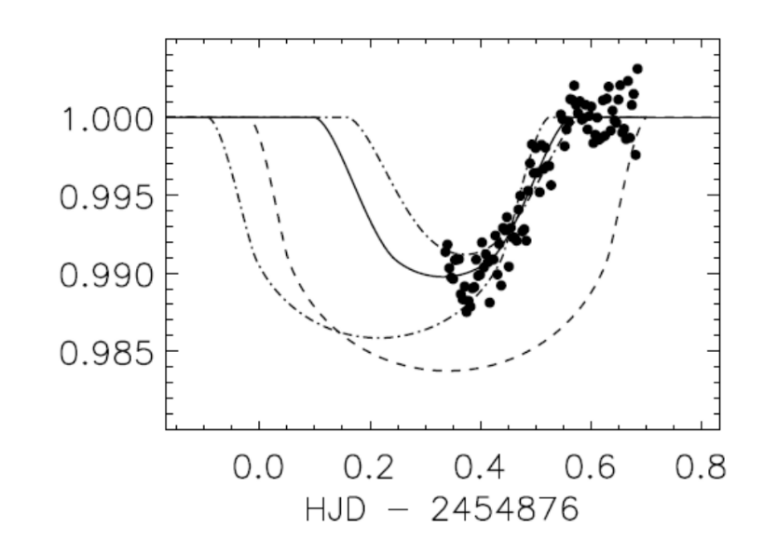
Garcia-Melendo & McCullough LC, made with 24-inch telescope
(reference below). See also my fit to Garcia-Melendo's data, above.
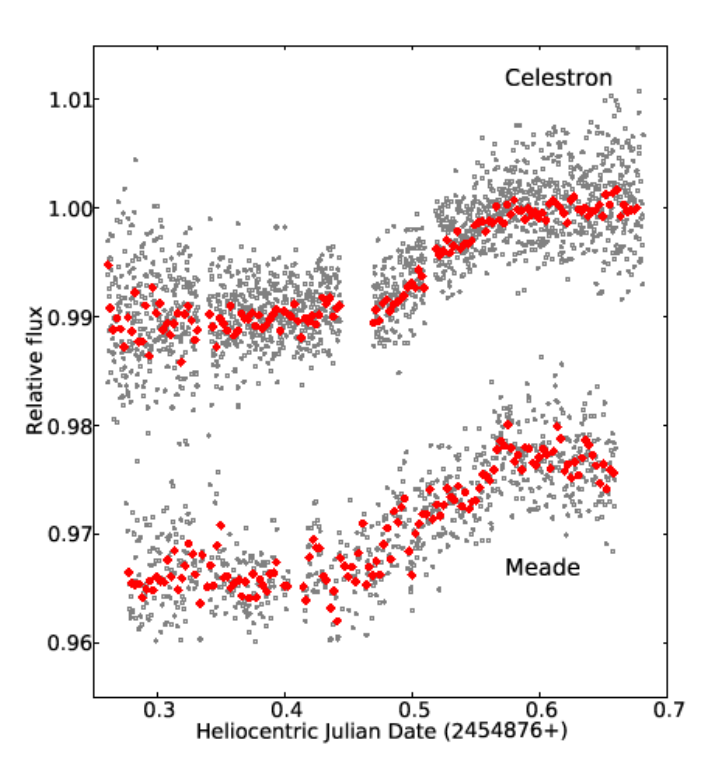
Fossey et al preprint LCs, made with 14-inch Celestron and 10-inch
Meade telescopes (reference below).
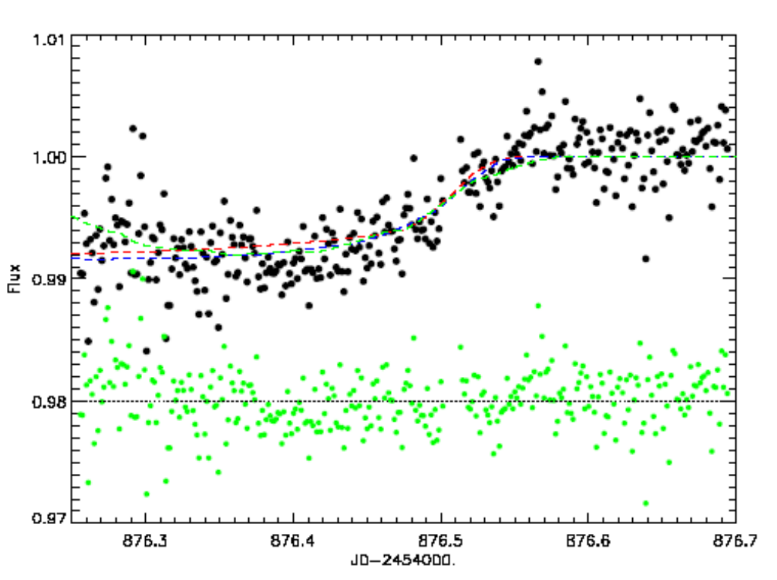
Moutou et al LC, made with 48-inch telescope (reference below).
Out-of-Transit Light Curves
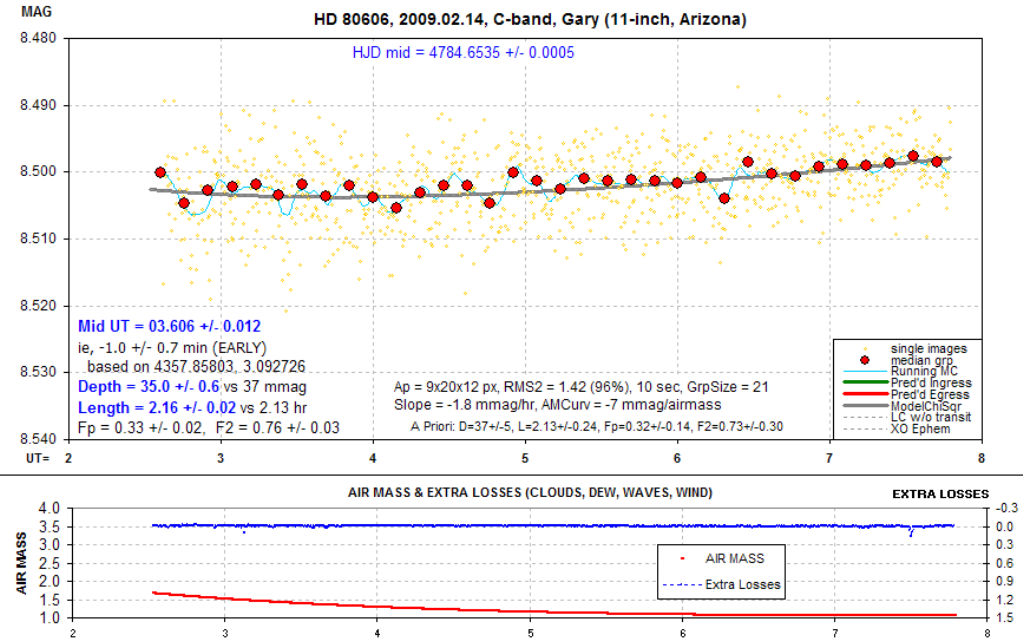
After egress (beginning of observations ~1.1 hrs after egress).
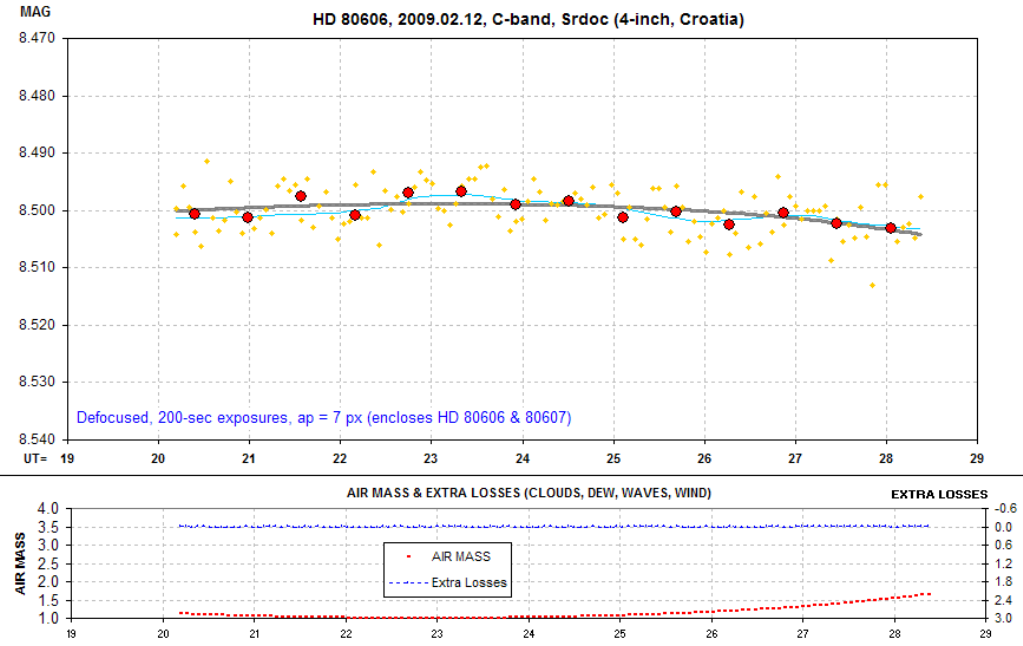
Before ingress (end of observations ~10 hrs before ingress).
Finder Image
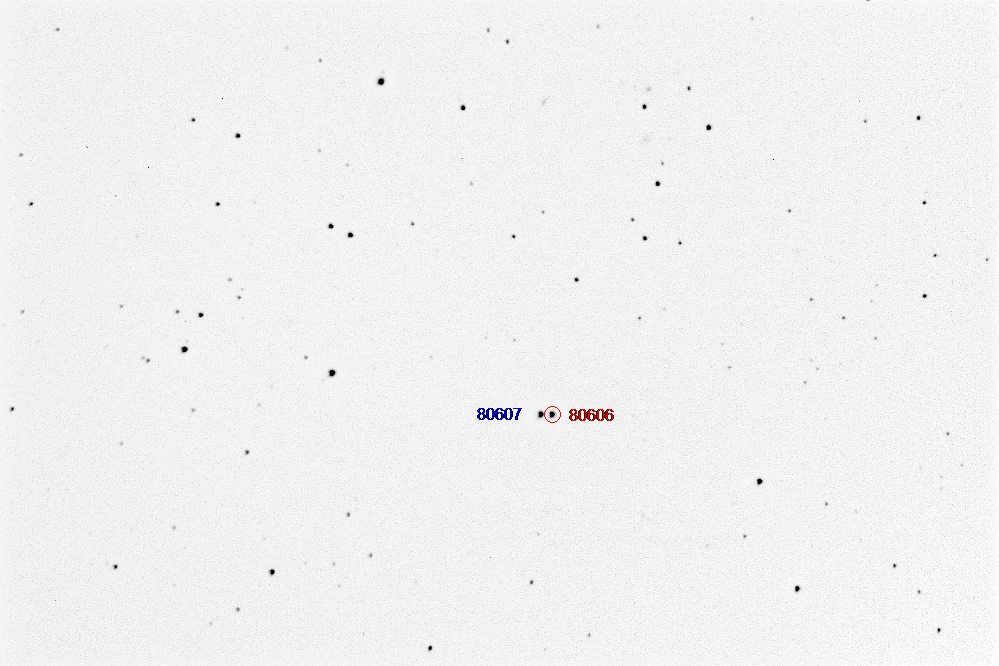
HD 80606 and HD 80607 are a binary pair 20 "arc apart. FOV =
30 x 20 'arc, north up, east left.
Miscellaneous Information
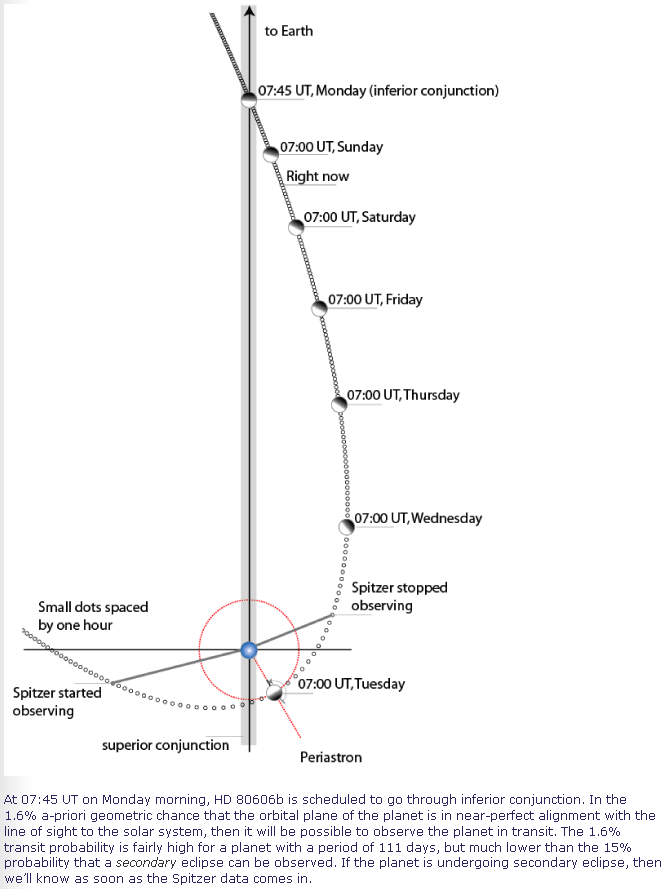
Greg Laughlin produced this diagram of the HD 870606b orbit
before the transit of 2009 February 13.
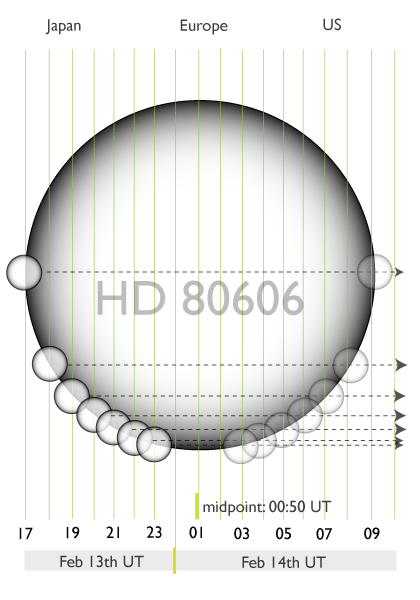
Greg Laughlin's depiction of the geometry for the
primary transit of 2009.02.14 (created before the event).
Since Arizona observers failed to see an egress on the day before
the Europeans observed egress it is possible to place an upper limit
on transit length: L <= 12 hours. This is illustrated by a graph
that Greg Laughlin posted on his oklo web site. Here's a "lift" from
that web page:
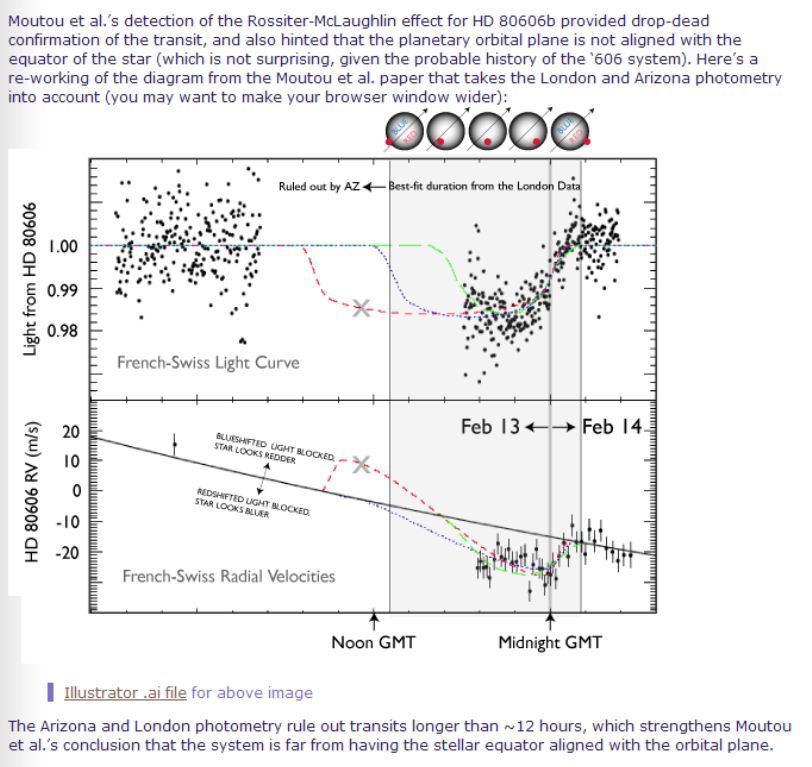
Greg Laughlin's constraint on L (from oklo web site: http://oklo.org/
This helps constrain the "impact parameter" (ratio = closest arc
distance to star center ÷ star radius) to ~ 0.85.
References
Gillon, M., 2009, "Spin-orbit
missalignment for the transiting planet HD 80606b": http://fr.arxiv.org/abs/0906.4904
Moutou et al http://arxiv.org/abs/0902.4457
Fossey et al http://exoplanet.eu/papers/fossey.pdf
Garcia & McCullough,
2009 http://arXiv.org/abs/0902.4493
Hebrard et al, 2010 http://fr.arxiv.org/abs/1004.0790
Return to calling web page AXA
WebMaster: Bruce
L. Gary. Nothing on this web page is copyrighted. This site opened:
2009.02.28. Last Update: 2010.05.07















